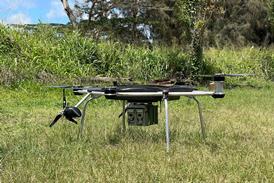The US Federal Aviation Administration is considering redesigning a large portion of airspace in the US north-east to address growing congestion. The options are to create a so-called integrated airspace alternative for the north-east, to modify existing airspace or use more ocean routeing.
The agency’s Draft Environmental Impact Statement proposes options for airspace redesign over New Jersey and parts of Connecticut, Delaware, New York and Pennsylvania. Although the FAA says it will not name “a preferred option”, it does tout one of the two integrated airspace alternatives as providing “the most substantial operational benefit”.
The approach, referred to as the integrated airspace alternative with integrated control complex (ICC), would merge the current New York Terminal Radar Approach Control (TRACON) and New York Center into a single facility. This involves full airspace consolidation “and is a new approach to the redesign of airspace from New York to Philadelphia”, says the FAA. It would use 3nm (5.5km) terminal airspace traffic separation – instead of 5nm – over a larger area and up to flight level 230 (23,000ft/7,000m) instead of FL190. The airspace would comprise the majority of current New York TRACON and New York Center airspace, plus several sectors from Washington Center and Boston Center. This would reduce complexity and delays, provide a more balanced controller workload, and increase capacity, says the FAA. It adds that the second variation, without the ICC, would have fewer advantages.
Modifying existing airspace involves routeing departures to the west along multiple tracks and by splitting the major westbound airway into two. The FAA says these gains are small.
The ocean-routeing alternative is designed to reduce aircraft noise impact on New Jersey residents. It would route departures from Newark airport over the Atlantic before turning them west to their destinations.
DARREN SHANNON/WASHINGTON DC
Source: Flight International
















